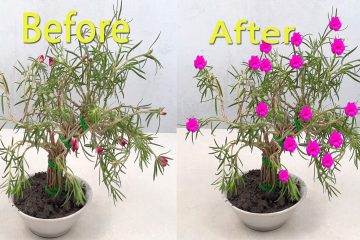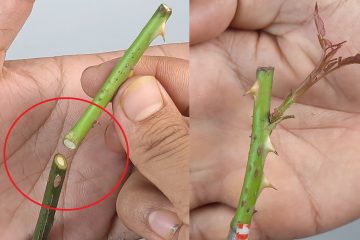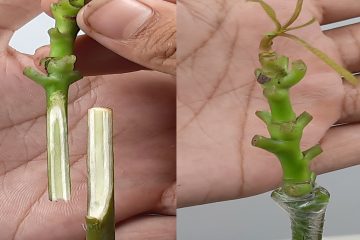Here’s how you can grow a peanut plant at home, starting from raw peanuts:
1. Obtain Raw, Untreated Peanuts:
You’ll need raw, unsalted peanuts still in their shells. Look for them at health food stores, some grocery stores, or purchase seeds specifically for planting from a garden center.
Avoid roasted or cooked peanuts, as they will not germinate.
Make sure the reddish-brown skin on the peanut is intact, as this protects the seed.
2. Choose the Right Time to Plant:
Peanuts need a long, warm growing season of 120-150 frost-free days.
Plant outdoors in late spring or early summer when the soil temperature reaches at least 65-70°F (around 18-21°C), typically a few weeks after the last frost.
In cooler climates, you can start seeds indoors about 5-8 weeks before the last expected frost.
3. Prepare the Planting Location:
Sunlight: Choose a spot that receives at least 8 hours of direct sunlight per day.
Soil: Peanuts prefer loose, well-drained, sandy loam soil. Heavy clay soil can hinder the development of the peanut pods.
Soil pH: The ideal soil pH is slightly acidic, between 6.0 and 6.5.
Enrich the soil: You can amend the soil with compost or other organic matter to improve drainage and fertility.
4. Planting the Peanuts:
Remove the shells carefully just before planting, being careful not to damage the skin on the peanut.
Direct sowing outdoors: Plant the peanut seeds about 1-2 inches deep and 4-6 inches apart. If planting in rows, space the rows about 20-24 inches apart.
Starting indoors: Sow seeds in large, 4-inch deep pots filled with moist potting soil. Place 4 shelled peanuts on top and cover with 1 inch of soil. Transplant seedlings outdoors after the danger of frost has passed, spacing them as mentioned above.
5. Watering:
Keep the soil consistently moist after planting to ensure good germination.
Water at soil level to avoid getting the leaves wet.
Once pegs (where peanuts develop) start to form and enter the soil (about 60-110 days after planting), consistent moisture is crucial for pod development.
Stop watering about 1-2 weeks before harvesting.
6. Hilling:
When the plants are about 6 inches tall, carefully cultivate around them to loosen the soil, making it easier for the pegs to penetrate.
Later, when the plants are around 12 inches tall, hill the soil around the base of the plants, similar to how you would hill potatoes. This provides support and encourages better peanut development.
You can also apply a light mulch (like straw or grass clippings) to help retain moisture and control weeds.
7. Flowering and Pegging:
Peanut plants will produce small, yellow, pea-like flowers about 30-40 days after planting. These flowers are self-pollinating.
After fertilization, the petals fall off, and a stalk called a “peg” develops. This peg grows downwards and into the soil, where the peanut pod will form and mature. Do not disturb the soil around the base of the plant once pegging begins.
8. Harvesting:
Peanuts are typically ready for harvest about 130-160 days after planting, depending on the variety.
Signs of maturity include yellowing leaves and the plant starting to die back.
The best way to check is to carefully dig up a plant or two and inspect the pods. The shells should be mature-looking with visible veins, and the kernels inside should be full.
To harvest, loosen the soil around the plants with a spading fork and gently lift the entire plant.
Shake off excess soil and allow the plants with the peanuts attached to dry in the sun for about a week.
After drying, remove the peanut pods from the plant and allow them to cure in a cool, dry place for 2-3 weeks before storing or enjoying.






















